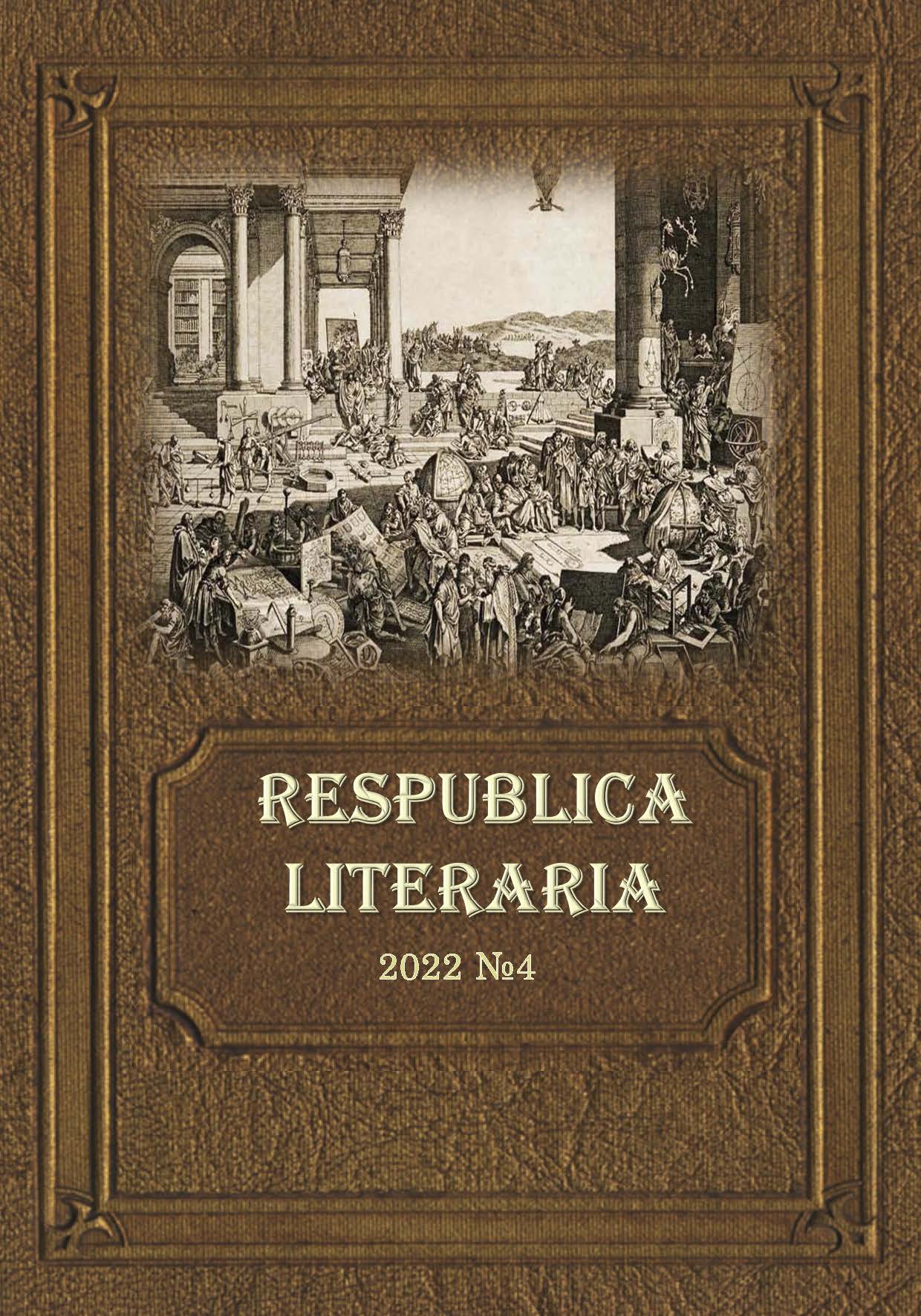How Achilles and Hector Missed Each Other: A Difficulty in the Theory of Motion That Distinguish the Passage of an Open Space Interval from the Passage of its Closure
DOI:
https://doi.org/10.47850/RL.2022.3.4.5-27Keywords:
the Oncoming Motions Paradox, “at-at theory of motion”, B. Russell, P. Benacerraf, continuum, open intervals, Zeno’s Paradoxes, the Arrow Paradox, the Dichotomy ParadoxAbstract
In this paper, I construct a new aporia against movement. First, I analyze the widely accepted “at‑at theory of motion” that was proposed by B. Russell. I show that an attempt to define on the basis of this theory a wide class of species of motion (including uniform motion) fails due to the fact that a moving object, after the expiration of open time intervals, can be at any point in space, and therefore can make “leaps”. Next, I propose an improved version of the “at-at theory of motion”, according to which the spatial interval passed by a moving object is a function of the time interval during which the object moved. But it turns out that such an understanding of movement leads to the Oncoming Motions Paradox: moving from two opposite ends of the interval towards each other, Achilles and Hector can successfully go through this entire interval, having visited every point of it, but not having met each other at any point of this interval. In the last part of the paper, I show that attempts to define motion through infinitesimal analysis either offer no less paradoxical solutions than Zeno’s paradoxes themselves, or these attempts are not immune to the occurrence of the Oncoming Motions Paradox.
References
Берестов, И. В. (2021a). Содержит ли современный анализ затруднений с зеноновскими последовательностями решение Дихотомии? Respublica Literaria. Т. 2. № 1. С. 28-36. DOI: 10.47850/RL.2021.2.1.28-36
Berestov, I. V. (2021a). Does Contemporary Analysis of Difficulties with Zeno Sequences Contain a Solution to the Dichotomy? Respublica Literaria. Vol. 2. no. 1. pp. 28-36. DOI: 10.47850/RL.2021.2.1.28-36 (In Russ.)
Берестов, И. В. (2021b). Анализ действенности Дихотомии Зенона Элейского. Respublica Literaria. Т. 2. № 4. С. 27-42. DOI: 10.47850/RL.2021.2.4.27-42
Berestov, I. V. (2021b). A Soundness Analysis of Zeno’s of Elea Dichotomy. Respublica Literaria. Vol. 2. no. 4. pp. 27-42. DOI: 10.47850/RL.2021.2.4.27-42 (In Russ.)
Берестов, И. В. (2021c). Зенон Элейский в современных переводах и философских дискуссиях. Новосибирск. Офсет-TM. (Сер. Античная философия и классическая традиция. Приложение к журналу ΣΧΟΛΗ. Т. V).
Berestov, I. V. (2021c). Zeno of Elea in Contemporary Translations and Philosophic Discussions. Novosibirsk. (In Russ.)
Alper, J. S., Bridger, M. (1997). Mathematics, Models and Zeno’s Paradoxes. Synthese. Vol. 110. no. 1. pp. 143-165.
Antonopoulos, C. (2003). The Tortoise is Faster. The Southern Journal of Philosophy. Vol. 41. pp. 491-510.
Arsenijević, M., Šćepanović, S., Massey, G. J. (2008). A New Reconstruction of Zeno’s Flying Arrow. Apeiron. Vol. 41. no.1. pp. 1-43.
Benacerraf, P. (2001). Tasks, Supertasks, and the Modern Eleatics. In Salmon, W. C. (ed.). Zeno’s Paradoxes. Indianapolis. Hacklett. pp. 103-129. (Originally published in 1962.)
Bernstein, A., Wattenberg, E. (1969). Nonstandard Measure Theory. In uxemburg, W. A. J. (ed.). Applications of Model Theory to Algebra, Analysis and Probability. New York. Holt, Rinehart and Winston. pp. 171-85.
Davis, M. (1983). Review of E. Nelson’s “Internal Set Theory: A New Approach to Nonstandard Analysis”. Journal of Symbolic Logic. Vol. 48. pp. 1203-1204.
Giordano, P. (2010). The Ring of Fermat Reals. Advances in Mathematics. Vol. 225. pp. 2050 2075.
Goldblatt, R. (1998). Lectures on the Hyperreals: An Introduction to Nonstandard Analysis. New York. Springer. XIV. 293 p.
Grünbaum, A. (2001). Zeno’s Metrical Paradox of Extension. In Salmon, W. C. (ed.). Zeno’s Paradoxes. Indianapolis. Hacklett. pp. 164-199. (Originally published in 1967.)
Harrison, С. (1996). The Three Arrows of Zeno: Cantorian and Non-Cantorian Concepts of the Continuum and of Motion. Synthese. Vol. 107. pp. 271-292.
Hurd, A. E., Loeb, P. A. (1985). An Introduction to Nonstandard Real Analysis. New York. Academic Press. xii. 232 p.
Nikolenko, O. D. (2012). The Nature of Physical Motion and Zeno’s Paradox. Physics Essays. Vol. 25. no. 3. pp. 320-326.
Nelson, E. (1977). Internal Set Theory: A New Approach to Nonstandard Analysis. Bulletin of the American Mathematical Society. Vol. 83. no. 6. pp. 1165-1198.
McLaughlin, W. I., Miller, S. L. (1992). An Epistemological Use of Non-standard Analysis to Answer Zeno’s Objections Against Motion. Synthese. Vol. 92. pp. 371-384.
Peijnenburg, J., Atkinson, D. (2008). Achilles, the Tortoise, and Colliding Balls. History of Philosophy Quarterly. Vol. 25. no. 3. pp. 187-201.
Reeder, P. (2015). Zeno’s Arrow and the Infinitesimal Calculus. Synthese. Vol. 192. no. 5. pp. 1315-1335.
Robert, A. (1988). Nonstandard Analysis. New York. Wiley. xx. 156 p.
Robinson, A. (1966). Non-standard Analysis. Amsterdam. North-Holland Publ. Co. xi.
Russell, B. (2001). The Problem of Infinity Considered Historically. In Salmon, W. C. (ed.). Zeno’s Paradoxes. Indianapolis. Hacklett. pp. 45-58. (From Russell, B. Our Knowledge of External World. Lecture 6. Originally published in 1914.)
Russell, B. (1903). The Principles of Mathematics. Cambridge (UK). CUP.
Thomson, J. (2001). Tasks and Super-Tasks. In Zeno’s Paradoxes. Salmon, W. C. (ed.) Indianapolis. Hacklett. pp. 89-102 (Originally published in 1954.)
White, M. J. (1982). Zeno’s Arrow, Divisible Infinitesimals, and Chrysippus. Phronesis. Vol. 27. no. 3. pp. 239-254.
Downloads
Published
How to Cite
Issue
Section
License

This work is licensed under a Creative Commons Attribution-NonCommercial-NoDerivatives 4.0 International License.
https://oc.philosophy.nsc.ru/remote.php/webdav/%D0%94%D0%BE%D0%B3%D0%BE%D0%B2%D0%BE%D1%80%20%D1%81%20%D0%B0%D0%B2%D1%82%D0%BE%D1%80%D0%BE%D0%BC%20RL-%D0%BF%D1%80%D0%B0%D0%B2.doc





